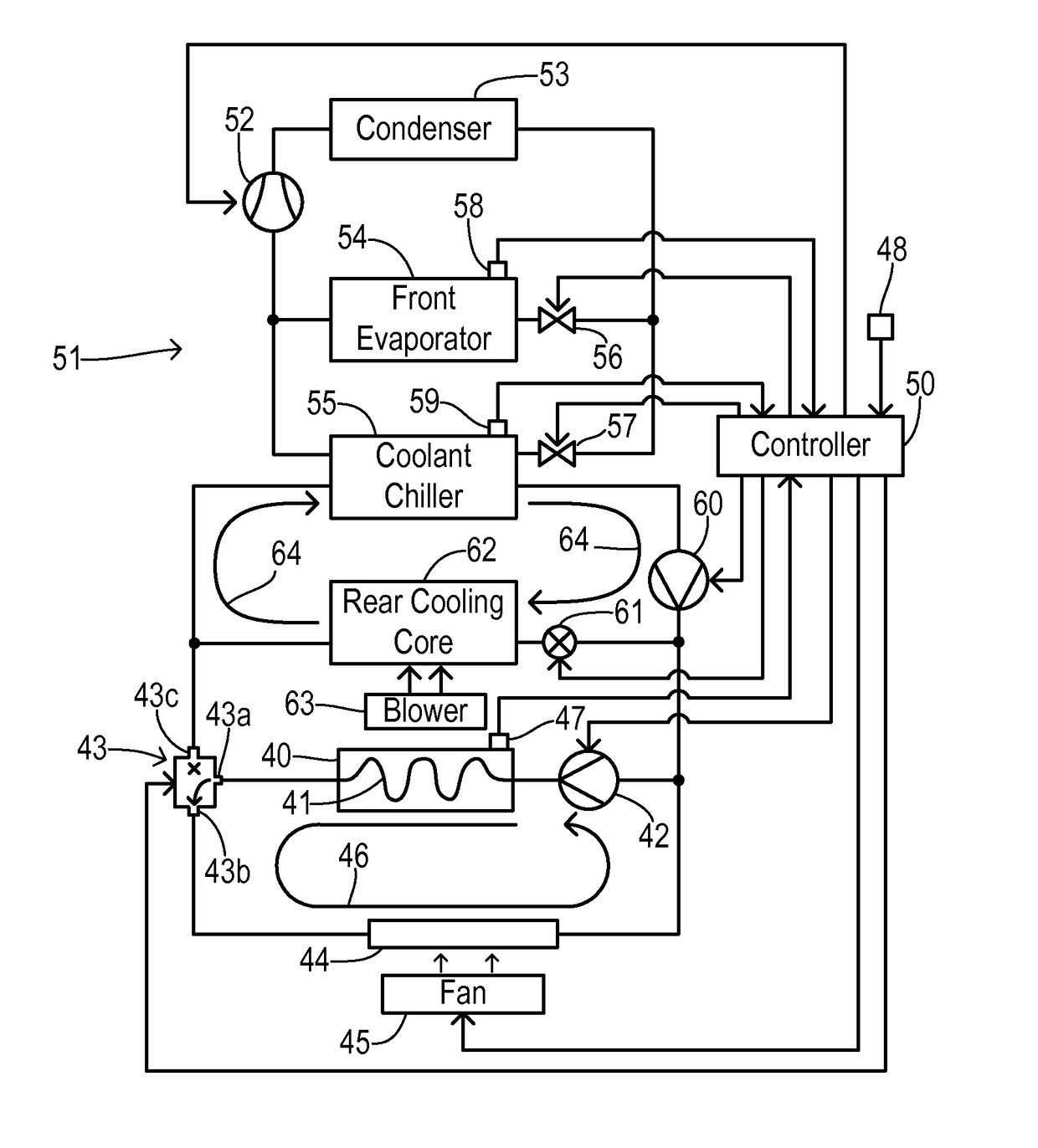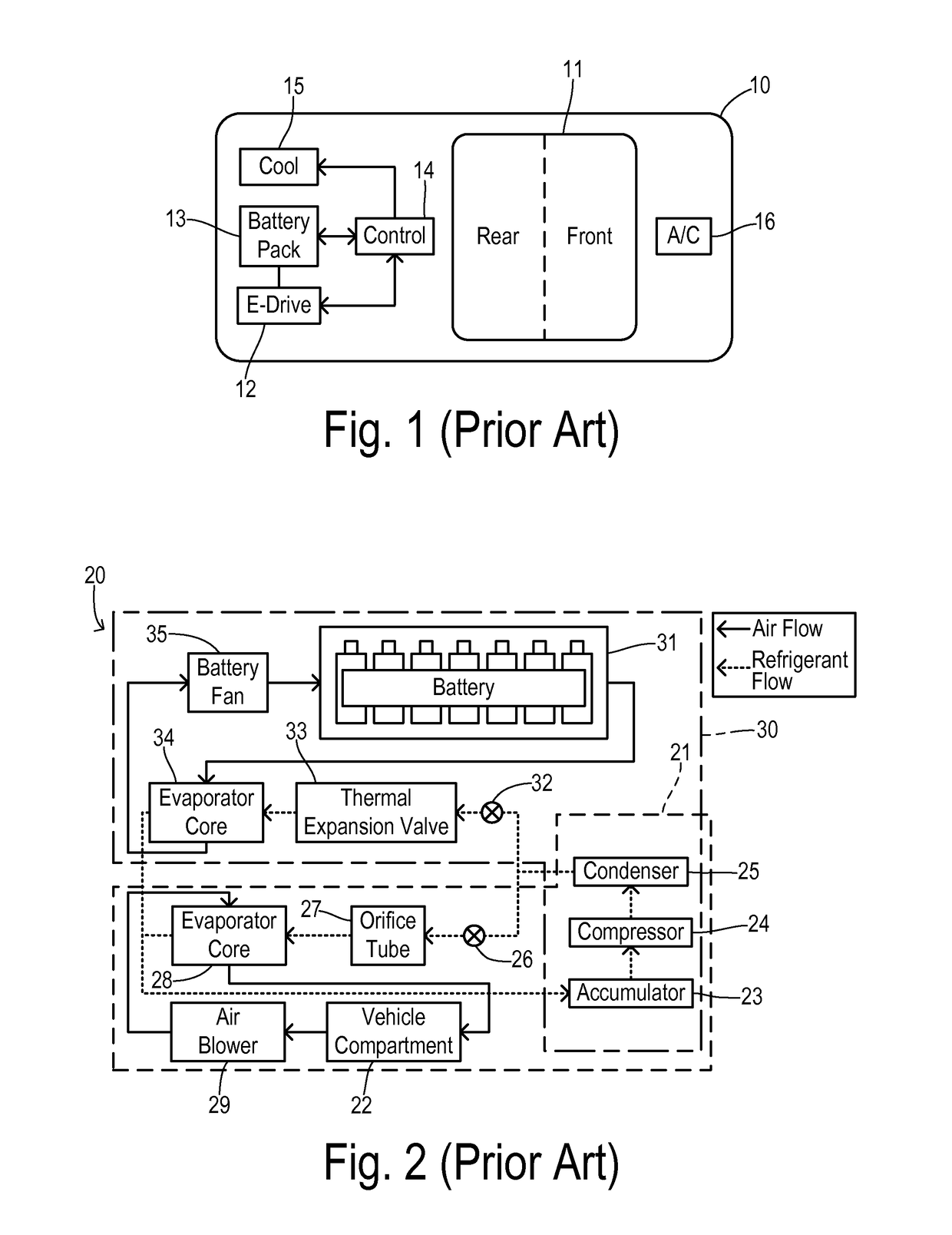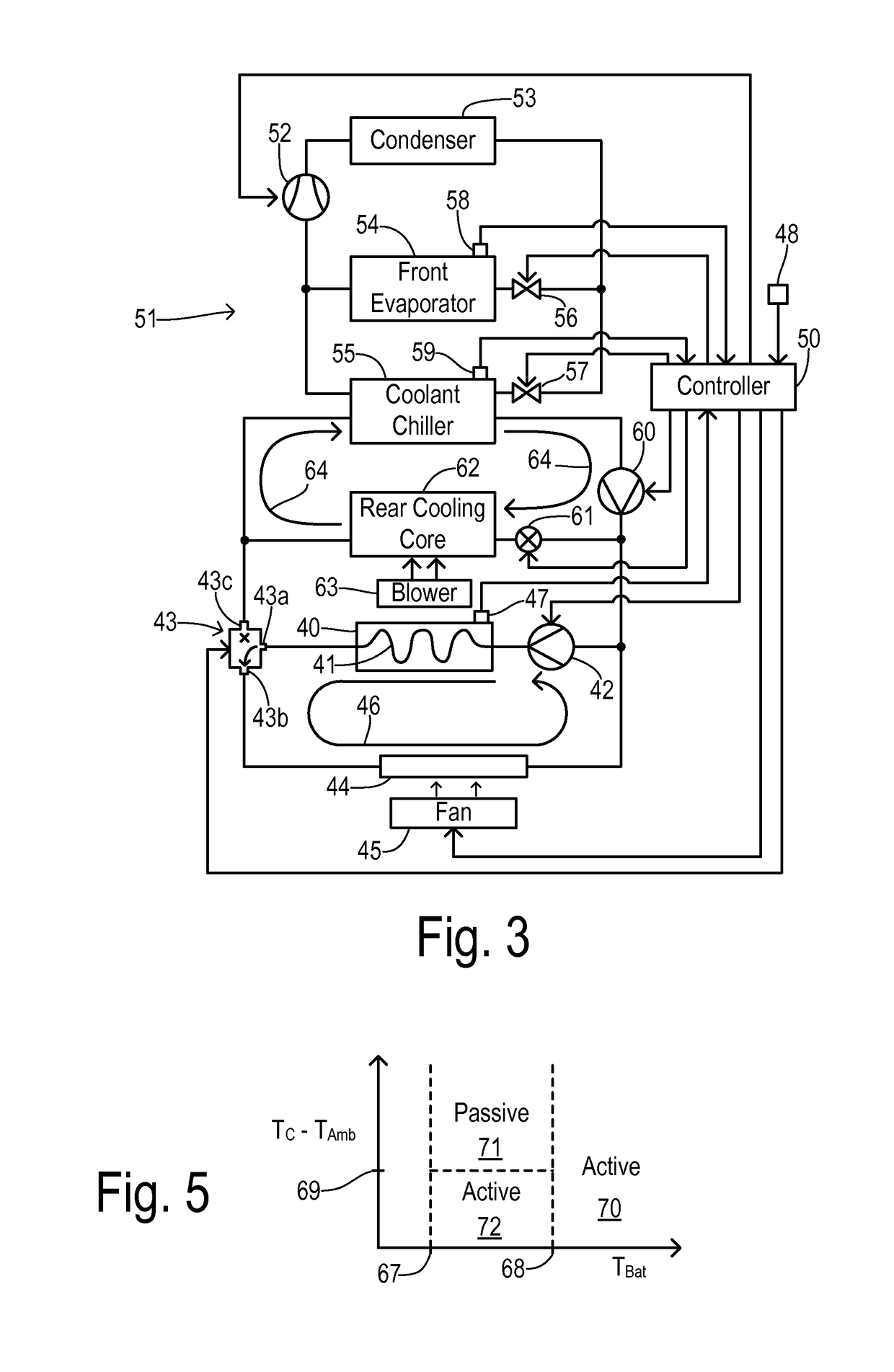Hybrid vehicle with multi-zone cabin cooling and integrated battery cooling
a hybrid vehicle and cabin cooling technology, applied in battery/fuel cell control arrangement, battery/fuel cell, electrochemical generators, etc., can solve the problems of reducing battery charge efficiency, power generation, impede battery performance, etc., and achieve the effect of reducing the need
- Summary
- Abstract
- Description
- Claims
- Application Information
AI Technical Summary
Benefits of technology
Problems solved by technology
Method used
Image
Examples
Embodiment Construction
[0019]Referring to FIG. 1, an electrified vehicle 10 has a passenger cabin 11 with front and rear zones as indicated. An electric drive 12 (e.g., an inverter-driven traction motor) receives electrical power from a battery pack 13. A controller 14 may include a battery control module for monitoring battery performance (including battery temperature) and a system controller for operating the inverter. A battery cooling system 15 provides a cooling fluid (such as a chilled liquid coolant or a cooled air flow) to battery pack 13 under control of controller 14. Conventional systems have utilized an independent source of cooled air in cooling system 15 and have used a shared cooling system with a passenger A / C system 16 (for either air-cooled or liquid-cooled batteries).
[0020]FIG. 2 shows a prior art shared cooling system 20 including a passenger compartment air conditioning (A / C) system 21 capable of cooling passenger compartment 22. The passenger compartment A / C system 21 includes an ac...
PUM
 Login to View More
Login to View More Abstract
Description
Claims
Application Information
 Login to View More
Login to View More - R&D
- Intellectual Property
- Life Sciences
- Materials
- Tech Scout
- Unparalleled Data Quality
- Higher Quality Content
- 60% Fewer Hallucinations
Browse by: Latest US Patents, China's latest patents, Technical Efficacy Thesaurus, Application Domain, Technology Topic, Popular Technical Reports.
© 2025 PatSnap. All rights reserved.Legal|Privacy policy|Modern Slavery Act Transparency Statement|Sitemap|About US| Contact US: help@patsnap.com



